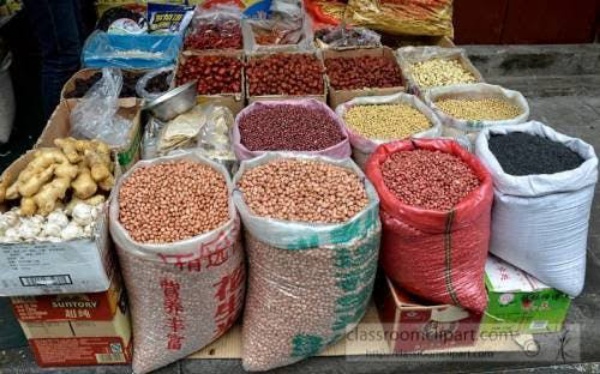News
Food prices reach new peak since July 2011 —FAO

The world food price barometer has risen to a new peak reaching its highest level since July 2011.
The Food and Agriculture Organization of the United Nations (FAO) revealed the development in its Food Price Index published on Thursday.
The FAO Food Price Index, which tracks monthly changes in the international prices of a basket of food commodities, averaged 133.2 points in October, up 3 per cent from September, rising for a third consecutive month.
The FAO Cereal Price Index in October increased by 3.2 per cent from September, while world wheat prices rose by 5 per cent.
READ ALSO: Food prices rise globally for ninth consecutive month as Nigeria, 44 others need help
The increase, according to FAO, was due to reduced harvests by the major exporters, which includes Canada, the Russian Federation and the United States of America.
Apart from this, international prices of all other cereals also increased month-on-month.
Also, the global cereal production is anticipated to increase to a new record level compared to last year.
Meanwhile, the FAO Vegetable Oil Price Index went up 9.6 per cent in October, hitting an all-time high.
According to the report, the increase was driven by firmer price quotations for palm, soy, sunflower and rapeseed oils.
Palm oil prices rose for a fourth consecutive month in October, largely underpinned by persisting concerns over subdued output in Malaysia due to ongoing migrant labour shortages.
On dairy, the FAO Dairy Price Index rose by 2.6 points from September, influenced by generally firmer global import demand for butter, skim milk powder and whole milk powder amid buyers’ efforts to secure supplies to build stocks.
By contrast, cheese prices remained largely stable, as supplies from major countries were adequate to meet global import demand.
Furthermore, the FAO Meat Price Index slipped 0.7 per cent from its revised value in September, marking the third monthly decline.
International quotations for pig and bovine meats fell amid reduced purchases from China and a sharp decline in quotations for supplies from Brazil.
By contrast, poultry and ovine meat prices rose, boosted by high global demand and low production expansion prospects.
Also, the FAO Sugar Price Index dropped by 1.8 per cent from September, marking the first decline after six consecutive monthly increases.
The decline was mainly the result of limited global import demand and prospects of large exportable supplies from India and Thailand as well as a weakening of the Brazilian Real against the US dollar.
Join the conversation
Support Ripples Nigeria, hold up solutions journalism
Balanced, fearless journalism driven by data comes at huge financial costs.
As a media platform, we hold leadership accountable and will not trade the right to press freedom and free speech for a piece of cake.
If you like what we do, and are ready to uphold solutions journalism, kindly donate to the Ripples Nigeria cause.
Your support would help to ensure that citizens and institutions continue to have free access to credible and reliable information for societal development.
























